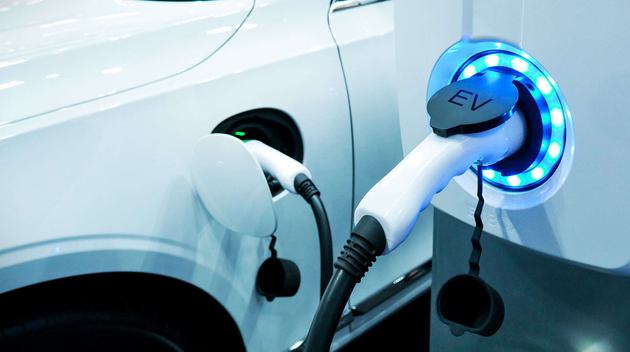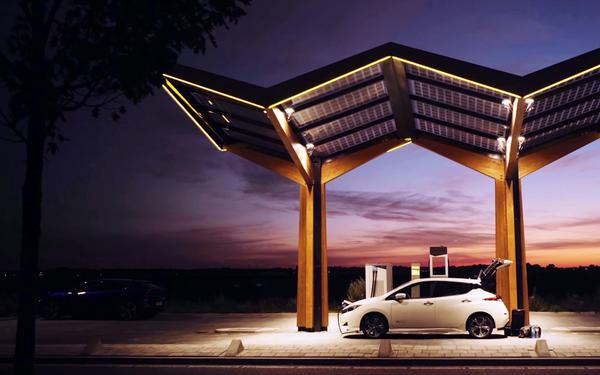Back to Articles
EV charging provision and changing Building Regulations: What does it all mean?
16th Aug 2022
When the Government updated Building Regulations with ‘Approved Document S: Infrastructure for charging electric vehicles’ in December 2021, the industry reacted in different ways.
From June 2022, all new build homes with associated parking (including those undergoing major renovation), and buildings undergoing a change of use, will require installation of EV charging infrastructure during construction. New non-residential properties, such as retail and commercial builds, will also have to install charging infrastructure.
Some viewed it as the start of what is anticipated to be a long run of trickling legislation that forces the developer’s hand to provide EV charging infrastructure, with others welcoming the latest compliance-led move towards future-proofing for net zero.
The adoption debate - as ever - boils down to whether provision should meet the ‘bare minimum’, or go ‘above and beyond compliance’. The answer lies in understanding the myriad of influential factors affecting implementation, uptake, use and effectiveness of EV charge point infrastructure.
Rather than regarding the provision requirements outlined in Approved Document S as another cost, they can instead be regarded as a way to future-proof assets and even generate revenue.
Approved Document S in brief
Amongst a raft of changes, key aspects of the document include the requirement that EV charging provision must be provided to new residential and non-residential buildings; buildings undergoing a material change of use to dwellings; residential and non-residential buildings undergoing major renovation; and mixed-use buildings that are either new, or undergoing major renovation. The question any developer will be asking is, ‘how many chargers are needed?’ and this is dependent on the number of parking spaces available, and the number of dwellings - whichever is lower.
For other uses, where there are more than ten spaces, one of those must have charging provision and 20% of the spaces must have cable provision.
Exceptions
There are exceptions. Areas of covered car parking have no requirements other than providing cable routing; and there are also exceptions based on the cost of the connection and infrastructure (if the average connection cost for each charge point is greater than £3,600 on a new build, for example, or exceeds 7% of the total cost of the major renovation). Again, this isn’t exhaustive but gives an indication of areas of exemption.
Thinking more laterally
Meeting compliance is one thing, but considering the bigger picture will save time and money. If we are to meet the Government’s 2030 targets, we should be seeing 700 chargers a day rolled out. Instead, just forty are currently installed.
The target is a reflection of the level of EV uptake we’re about to see. We are on the cusp of mass EV adoption as access to more affordable electric vehicles is easing significantly as manufacturers start to realise economies of scale.
Access to charge points remains a challenge but the industry is moving fast. Whilst publicly available charging is starting to increase, homeowners are installing their own, private charge points. This has the benefit of allowing consumers to charge their vehicles when it suits them, especially at points in the day when energy tariffs are low. Access to a private domestic charging area - whether this be a driveway or shared residential car park, for example - is a big advantage for consumers. Buyers and occupiers will expect good EV charging provision in the same way they do broadband connectivity, helping to increase the demand and value of these properties and new developments. However, it remains that in many areas, a high proportion of homes will be reliant on on-street or other public chargers.
In addition to understanding how many chargers to install, knowing what type and the associated power draw is critical to calculating grid connection costs, which are proving one of the biggest development constraints and the area where we are often seeing clients significantly overspend without reason.
EV charging as a revenue stream
Landowners and property developers can generate revenue while meeting government regulations for installing and running EV charge points.
This can be achieved by working with charge point operators to lease or even sell part of the development for EV charging, or, on commercial sites, entering a profit-sharing agreement from the revenue generated from those paying to charge their vehicles.
For those that diversify the accessibility to their chargers - e.g., for public use, or private electric fleet use overnight - further income opportunities await.
Avoiding over-provision and over-specification is key to success, however.
At planning stage, evidencing provision is key
Approved Document S provides a framework for evidencing provision, but to really understand the requirements of any development - new or existing - a data driven method is needed. Underpinning provision with an evidence base demonstrates a considered approach which meets the needs of users today and into the future.
There are data-driven tools on the market, all of which work in different ways. At Hydrock, we believe we have developed the most technically advanced of these models, due to the breadth of data sources we analyse and, crucially, the interpretation of this data from transportation planners and engineers from our energy and utilities teams.
This includes analysis of factors such as journey origin, which dictates likely charge upon arrival, and therefore relative charging requirements once parked up. By analysing thousands of data points, our model can inform how many chargers are required, what type, and over what period of time to install them as demand increases and revenue surpasses implementation costs.
In conclusion
There’s no doubt that fundamentally, Approved Document S leads to extra cost for developers. However, with a cost cap of £3,600 (average) for the work involved in installing charge points, developers need only install the cable routes if spend is set to exceed this. This stops the provision of EV chargers becoming prohibitively expensive, and helps continued efforts to decarbonise the built environment.
This article was originally published in the RTPI’s South West newsletter.












